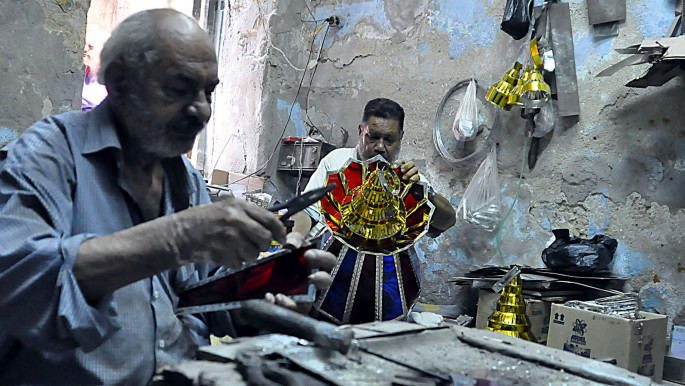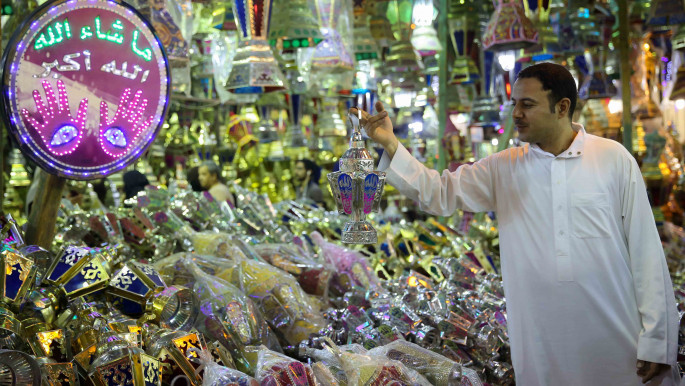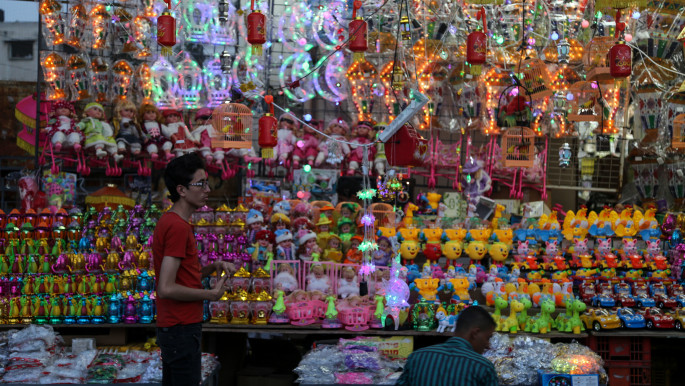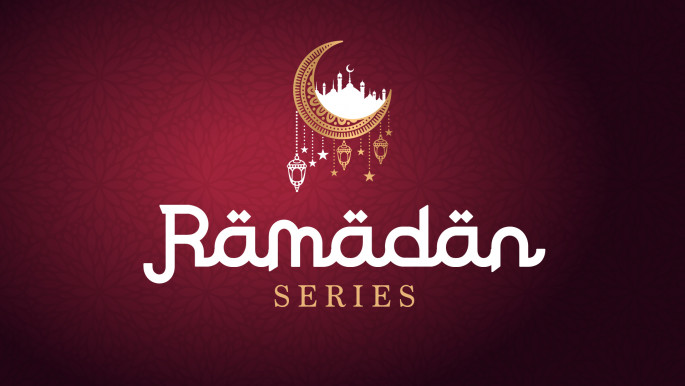Fanoos Ramadan: History of the holy month's iconic lanterns
Colourful decorations, including the iconic Fanoos (lantern), can be seen illuminating the entrances of buildings, houses and shops.
You probably already know that lanterns have been associated with the holy month for centuries, but do you know where they came from?
There have been many versions of the story behind the origin of the Fanoos.
However, most stories agree that it appeared during the Fatimid period, and that it is an entirely Egyptian tradition that spread to other countries in the Arab world.
In 969 AD, according to one story, Egyptian people and children held their lanterns to greet the Fatimid Caliph al-Muizz li-Din Allah as they waited for his arrival in Cairo on the first night of Ramadan.
Pleased with the sight of the beautiful lanterns, the Caliph ordered craftsmen to start making them commercially, and he issued a decree requiring people to hang lanterns on the doors of every shop and house at night or face a penalty.
 |
|
| A few dozen workshops remain in Egypt today, making the traditional handcrafted lanterns of brass and tinted glass [Anadolu] |
This led to a boom in the lantern industry, with craftsmen creating new shapes and sizes for the Fanoos.
According to another account, a Fatimid ruler banned women from leaving the house all year, except during the month of Ramadan, but on the condition that their children walk ahead of them carrying lanterns to light the way and signal the passing of women.
 |
|
| People shop in a market where mostly Fanoos Ramadan Lanterns are on sale in Cairo [Getty] |
Since then, decorating buildings with lanterns has become an annual Ramadan ritual.
The image of children holding their colourful Fanoos and singing old Ramadan songs in the streets of Cairo alongside dried fruit carts also became associated with the holy month.
Today, with the advance of technology and electricity, lanterns are no longer used as a source of light, but rather as traditional decoration.
A few dozen workshops remain in Egypt today, making the traditional handcrafted lanterns of brass and tinted glass. However, due to their high cost and limited supply, most people buy cheap plastic lanterns imported from China.
 |
|
| Palestinian vendors display different models of traditional Ramadan lanterns [Getty] |
The New Arab's Ramadan Series: Click on our Special Contents tab to read more on Ramadan 2018:






 Follow the Middle East's top stories in English at The New Arab on Google News
Follow the Middle East's top stories in English at The New Arab on Google News


